connect
people
Annual
Report
2015



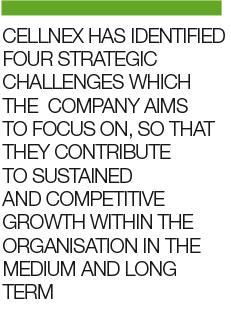
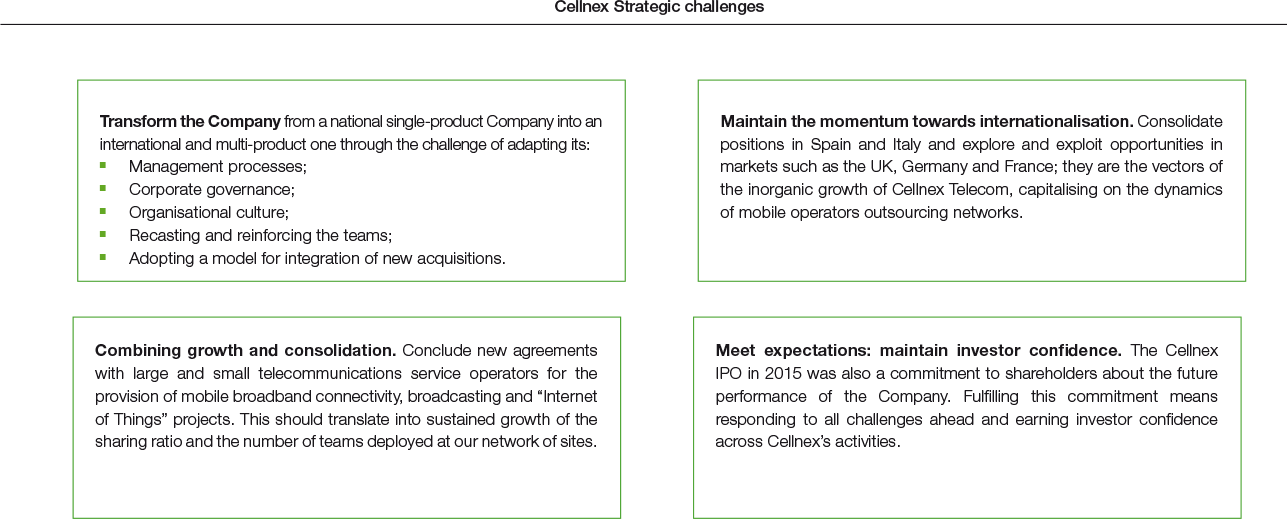
 Future prospects. The great opportunity of the Digital Single Market
Future prospects. The great opportunity of the Digital Single MarketAs a telecommunications infrastructure operator, the Digital Single Market is a great opportunity for Cellnex in the following three ways:
Within this framework, it is worth noting that mobile operators in Europe are driving a process of outsourcing their infrastructure, as a result by three main factors:

The higher rate of co-location achieved by independent operators reduces the need to build more towers, speeds up deployment, reduces implementation costs and reduces life-cycle costs for the network operator.
The model has also shown that independent operators can cut operating costs because the towers are their core business and they have more experience of managing passive infrastructure.
The role that an infrastructure operator such as Cellnex can play in a scenario designed to facilitate the emergence of the digital single market amounts to its capability - on account of its independence and neutrality in relation to the operators offering services to end-users - to offer solutions to streamline and simplify the telecommunications infrastructure map. This can help to make these operators more efficient, make better use of the networks and speed up time to market in rolling out new generation infrastructures and networks that facilitate public access to new services and solutions that are worthy of an advanced digital society and economy.
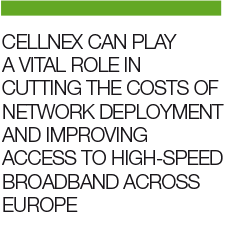 Three main fronts
Three main frontsAn independent operator should act as a facilitator within the DSM to simplify efficiency on the three main fronts - mobile broadband infrastructures, broadcasting, and Smart networks services (IoT).
In the case of mobile broadband infrastructure, Cellnex has the capability to respond to the need to deploy a widespread network by combining various technologies to ensure a sufficient density of transmission systems (towers, small cells, wi-fi, etc.) that complement one another and provide true mobile broadband.
Communications towers are telecommunications operators’ essential passive infrastructure, in which the “active” equipment for mobile data transmission and other services is installed.
This highlights the wide margin for growth in the “towering” market in Europe.
A report by EY, published in March 2015 by the European Wireless Infrastructure Association (EWIA), highlights the sector’s potential in Europe: “The proportion of towers currently managed by infrastructure operators in the United States is 84%, compared with only 20% in Europe.” The report estimates that an increase in the level of outsourcing to bring it up to the current levels in the USA would earn a net profit of €23 billion euros for the European economy over the next decade, and could reduce the number of towers to be built by 80%. EWIA estimates that it can release €27 billion of capital investment by allowing mobile operators to release tied up resources, by selling their passive infrastructure to an independent operator.
The broadcasting, cultural and creative industry’s industrial strategy is another aspect to be fostered with a view to maintaining a competitive broadcasting industry in Europe by removing uncertainties about access to the broadcasting spectrum so that the players concerned can continue investing and innovating.
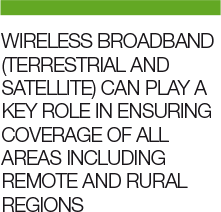 The third pillar of the DSM aims to maximise the growth of the digital economy - meaning smart solutions and infrastructure - by rolling out intelligent infrastructure: SmallCells, wifi access points, security and emergency services, infrastructure for connected cars, etc. Within that environment, an infrastructure operator can facilitate, streamline and accelerate roll-out by efficiently connecting objects and people.
The third pillar of the DSM aims to maximise the growth of the digital economy - meaning smart solutions and infrastructure - by rolling out intelligent infrastructure: SmallCells, wifi access points, security and emergency services, infrastructure for connected cars, etc. Within that environment, an infrastructure operator can facilitate, streamline and accelerate roll-out by efficiently connecting objects and people.
Given the significant growth of data services and the importance of improving the European public’s access to high-speed broadband, Cellnex can play a vital role in cutting the costs of network deployment and improving access to high-speed broadband across Europe.
This model has the following benefits for the economy:
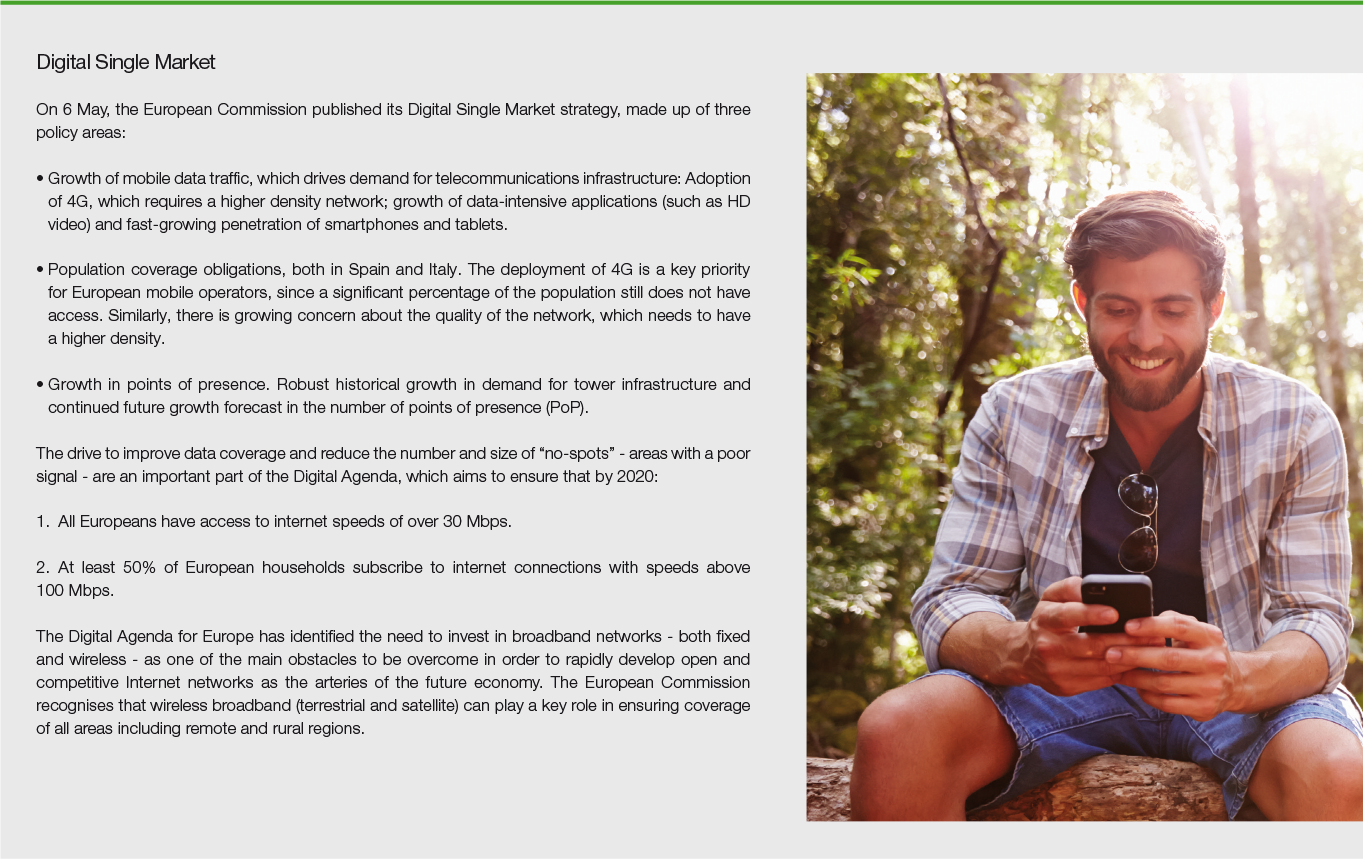
We use our own and third-party cookies to improve our services and show you advertising related to your preferences by analysing your browsing habits. If you continue to browse, we understand that you accept the use of these cookies. You can change your configuration or obtain further information here. Accept